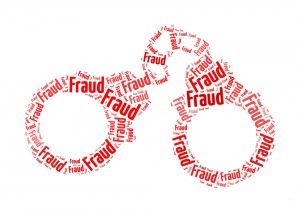 The securities fraud lawyers of Gana Weinstein LLP are investigating customer complaints filed with The Financial Industry Regulatory Authority’s (FINRA) against broker Bahram Mirhashemi (Mirhashemi). According to BrokerCheck records Mirhashemi has been the subject of at least five customer complaints, one regulatory action, one regulatory investigation, two employment separations, four judgments or tax liens, and one financial disclosure. The customer complaints against McMahon allege a number of securities law violations including that the broker made unsuitable investments, unauthorized trading, negligence, breach of fiduciary duty, and churning (excessive trading) among other claims.
The securities fraud lawyers of Gana Weinstein LLP are investigating customer complaints filed with The Financial Industry Regulatory Authority’s (FINRA) against broker Bahram Mirhashemi (Mirhashemi). According to BrokerCheck records Mirhashemi has been the subject of at least five customer complaints, one regulatory action, one regulatory investigation, two employment separations, four judgments or tax liens, and one financial disclosure. The customer complaints against McMahon allege a number of securities law violations including that the broker made unsuitable investments, unauthorized trading, negligence, breach of fiduciary duty, and churning (excessive trading) among other claims.
In December 2015, FINRA initiated an investigation that looked into claims of unauthorized trades, unsuitable mutual fund switching, churning of customer accounts, fraud, misleading communications with customers, using unapproved methods of communications, filing false forms with FINRA concerning tax liens, and engaging in unapproved outside business activities. Shortly thereafter, Mirhashemi’s firm terminated him stating the FINRA investigation as the reason for the termination.
When brokers engage in excessive trading, sometimes referred to as churning, the broker will typical trade in and out of securities, sometimes even the same stock, many times over a short period of time. Often times the account will completely “turnover” every month with different securities. This type of investment trading activity in the client’s account serves no reasonable purpose for the investor and is engaged in only to profit the broker through the generation of commissions created by the trades. Churning is considered a species of securities fraud. The elements of the claim are excessive transactions of securities, broker control over the account, and intent to defraud the investor by obtaining unlawful commissions. A similar claim, excessive trading, under FINRA’s suitability rule involves just the first two elements. Certain commonly used measures and ratios used to determine churning help evaluate a churning claim. These ratios look at how frequently the account is turned over plus whether or not the expenses incurred in the account made it unreasonable that the investor could reasonably profit from the activity.
 The attorneys with the offices of Gana Weinstein LLP are investigating customer complaints and The Securities and Exchange Commission (SEC) recently filed complaint alleging that Oregon-based investment firm Aequitas Management, LLC (Aequitas Management) and its subsidiaries operated a Ponzi-like scheme that defrauded its 1,500 customers of approximately $350 million.
The attorneys with the offices of Gana Weinstein LLP are investigating customer complaints and The Securities and Exchange Commission (SEC) recently filed complaint alleging that Oregon-based investment firm Aequitas Management, LLC (Aequitas Management) and its subsidiaries operated a Ponzi-like scheme that defrauded its 1,500 customers of approximately $350 million. Securities Lawyers Blog
Securities Lawyers Blog





















